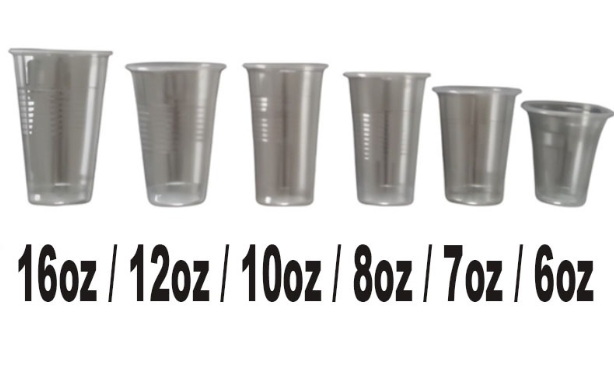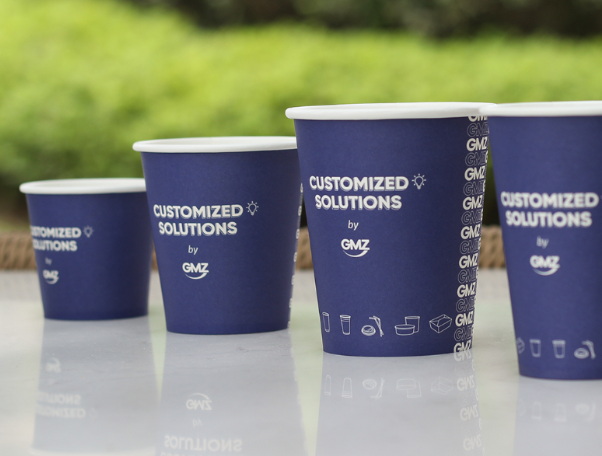
Content Menu
● Introduction to Disposable Cups
>> Disposable Cup Sizes and Uses
● Impact of Disposable Cup Measurements on Portion Control
● Other Tools for Portion Control
● Strategies for Effective Portion Control
● The Role of Portion Control in Weight Management
>> The Impact of Large Portion Sizes
● Implementing Portion Control in Daily Life
● Conclusion
● FAQs
>> 1. What are the benefits of using disposable cups for portion control?
>> 2. How do disposable cup measurements affect food waste reduction?
>> 3. What other tools are effective for portion control besides disposable cups?
>> 4. How can understanding standard serving sizes help with portion control?
>> 5. What role do digital scales play in portion control?
● Citations:
Disposable cup measurements play a significant role in portion control, especially in environments where precise serving sizes are crucial, such as restaurants, schools, and healthcare facilities. These cups are designed to provide a standardized volume for liquids and semi-solids, helping to manage the amount of food or drink consumed. In this article, we will explore how disposable cup measurements impact portion control and discuss various tools and strategies used for effective portion management.

Introduction to Disposable Cups
Disposable cups are widely used for portion control due to their convenience and ease of use. They come in various sizes, such as 1 oz, 2 oz, 3.25 oz, 4 oz, and 5.5 oz, which are ideal for serving condiments, sauces, and beverages in controlled amounts. These cups are often made from plastic or paper and are designed to be leak-resistant and stackable, making them efficient for both storage and transportation.
Disposable Cup Sizes and Uses
- 1 oz Cups: Typically used for small servings of condiments like ketchup or mustard.
- 2 oz Cups: Suitable for larger condiments or small portions of sauces.
- 3.25 oz Cups: Ideal for salad dressings or toppings.
- 4 oz Cups: Often used for beverages or larger portions of sauces.
- 5.5 oz Cups: Suitable for larger servings of beverages or desserts.
Impact of Disposable Cup Measurements on Portion Control
Disposable cup measurements are essential for maintaining consistent portion sizes, which is crucial for managing calorie intake and ensuring nutritional balance. Here are some ways these measurements affect portion control:
1. Consistency in Serving Sizes: Disposable cups ensure that each serving is consistent, which helps in maintaining a balanced diet and managing calorie intake. This consistency is particularly important in environments like schools and hospitals where nutritional standards must be met.
2. Reducing Food Waste: By using cups with defined capacities, foodservice providers can minimize over-portioning, which reduces food waste and saves costs.
3. Educational Tool: Disposable cups can serve as an educational tool by helping individuals understand appropriate serving sizes, especially for condiments and sauces that are often overused.
4. Convenience and Ease of Use: Disposable cups are easy to use and clean up, making them ideal for busy environments where time efficiency is crucial.
Other Tools for Portion Control
Besides disposable cups, several other tools and strategies are used for effective portion control:
1. Measuring Cups and Spoons: These are essential for precise measurement of ingredients during meal preparation, ensuring that the final product meets desired nutritional standards. Measuring cups are particularly useful for liquids and grains, while measuring spoons are ideal for spices and seasonings[4].
2. Calibrated Plates and Bowls: These tools help in visually managing portion sizes by providing guidelines for different food groups. For example, portion-control plates often have sections for proteins, vegetables, and carbohydrates, making it easier to achieve a balanced meal[4].
3. Digital Scales: For precise measurement of food weights, digital scales are invaluable, especially for tracking macronutrients. They allow users to measure food in various units, providing greater accuracy than cups or spoons[4].
4. Portion Control Serving Utensils: Calibrated serving spoons and ladles can help in serving consistent amounts of food. This is particularly important in restaurants where consistency in portion sizes is crucial for customer satisfaction and cost management[7].
Strategies for Effective Portion Control
Effective portion control involves a combination of tools and strategies:
1. Use Smaller Dinnerware: Smaller plates and bowls can help reduce the amount of food served, leading to lower calorie intake. This visual cue helps individuals perceive smaller portions as more filling[1].
2. Measure High-Calorie Foods: Accurately measuring high-calorie foods like oils and nuts is crucial for maintaining a balanced diet. These foods are often high in calories but low in volume, making precise measurement essential[5].
3. Educate on Portion Sizes: Understanding standard serving sizes helps in making informed food choices. This education can be facilitated through visual aids like portion-control plates or guides that illustrate appropriate serving sizes[4].
4. Create a Portion Control Checklist: In environments like restaurants, creating a checklist can help ensure that all staff members are aware of and adhere to portion standards. This checklist should include key ingredients that require strict portion control and visual aids for easy reference[3].
5. Utilize Visual Aids: Visual aids such as laminated portion size guides or images of correctly plated dishes can reinforce training and serve as a constant reminder of portion standards[3].

The Role of Portion Control in Weight Management
Portion control is a critical component of weight management. By consuming appropriate portion sizes, individuals can create a calorie deficit that promotes gradual, sustainable weight loss. Additionally, portion control helps in maintaining weight loss over time by preventing overeating and ensuring that energy intake matches energy expenditure[1].
The Impact of Large Portion Sizes
Large portion sizes have been identified as a significant contributor to the rise in obesity rates. Studies have shown that doubling the served portion size at a meal can increase acute meal energy intake by 35%[2][6]. Reducing portion sizes can lead to significant decreases in daily energy intake and may help prevent weight gain[2][6].
Implementing Portion Control in Daily Life
Implementing portion control in daily life involves making conscious choices about the amount of food consumed. Here are some practical tips:
1. Start with Small Changes: Begin by reducing portion sizes slightly and gradually adjust as needed. This approach helps in avoiding drastic changes that might be difficult to maintain.
2. Use Portion Control Tools: Invest in tools like measuring cups, digital scales, and portion-control plates to make portion management easier and more accurate.
3. Plan Meals: Planning meals in advance can help ensure that appropriate portion sizes are maintained. This involves preparing recipes with precise ingredient measurements.
4. Eat Mindfully: Pay attention to hunger and fullness cues to avoid overeating. Mindful eating helps in recognizing when to stop eating, even if the portion size is not fully consumed.
5. Educate Family Members: Involve family members in portion control practices to create a supportive environment. This can include using visual aids or portion-control tools together.
Conclusion
Disposable cup measurements play a vital role in maintaining consistent portion sizes, which is essential for effective portion control. By using these cups alongside other tools like measuring cups, calibrated plates, and digital scales, individuals can better manage their dietary intake and promote healthier eating habits. Understanding the importance of portion control and utilizing the right tools can lead to significant improvements in weight management and overall health.

FAQs
1. What are the benefits of using disposable cups for portion control?
Using disposable cups for portion control helps ensure consistent serving sizes, reduces food waste, and provides an easy-to-use tool for managing calorie intake.
2. How do disposable cup measurements affect food waste reduction?
Disposable cup measurements help reduce food waste by preventing over-portioning. By using cups with defined capacities, foodservice providers can minimize excess food, leading to cost savings and a more sustainable approach to food management.
3. What other tools are effective for portion control besides disposable cups?
Besides disposable cups, measuring cups, calibrated plates, digital scales, and portion control serving utensils are effective tools for managing portion sizes.
4. How can understanding standard serving sizes help with portion control?
Understanding standard serving sizes helps individuals make informed food choices and manage their dietary intake more effectively. It aids in recognizing appropriate amounts of food to consume, which is crucial for maintaining a balanced diet.
5. What role do digital scales play in portion control?
Digital scales provide precise measurements of food weights, which is essential for tracking macronutrients and ensuring that meals meet specific dietary requirements. They are particularly useful for managing high-calorie foods and maintaining a calorie deficit for weight loss.
Citations:
[1] https://cooksrx.ca/blog/portion-control-weight-management
[2] https://pmc.ncbi.nlm.nih.gov/articles/PMC9975786/
[3] https://www.manifest.ly/use-cases/restaurant/portion-control-checklist
[4] https://www.yahoo.com/lifestyle/portion-control-154959509.html
[5] https://www.nutriblooms.com.au/weight-loss/understanding-portion-control-a-dietitians-tips-for-weight-loss/
[6] https://www.nutrition.org.uk/news/portion-size-cause-of-and-solution-to-overweight-and-obesity/
[7] https://kallascompany.com/10-tips-for-portion-control/
[8] https://lssproducts.com/meal-measure-portion-control-aid/
[9] https://www.rewardhospitality.com.au/takeaway-and-packaging/takeaway/portion-cups
[10] https://pactivevergreen.com/products/yspp400a
[11] https://pmc.ncbi.nlm.nih.gov/articles/PMC4105579/
[12] https://onlinelibrary.wiley.com/doi/10.1111/nbu.12307
[13] https://www.touchbistro.com/blog/when-it-comes-to-portions-size-matters/
[14] https://www.wardpackaging.com.au/product-range/eco-range/portion-control/
[15] https://chefequipment.com/blogs/resources/measuring-and-portion-control-tools-for-foodservice
[16] https://health.umms.org/2024/05/09/how-portion-control-can-benefit-your-health/
[17] https://www.who.int/tools/elena/bbc/portion-childhood-obesity
[18] https://www.innovorder.com/en/blog/5-methods-for-restaurant-to-manage-food-portions
[19] https://www.chem-pack.com.au/product/6745-portion-cup-0-75oz-22ml-2500-ctn
[20] https://www.restaurantware.com/blogs/smallwares/best-portion-control-tools-for-foodservice-operators

















